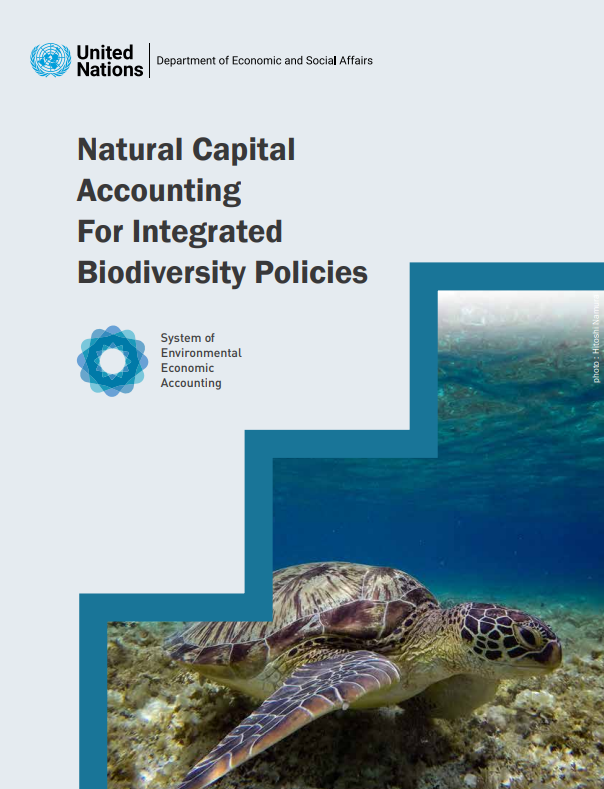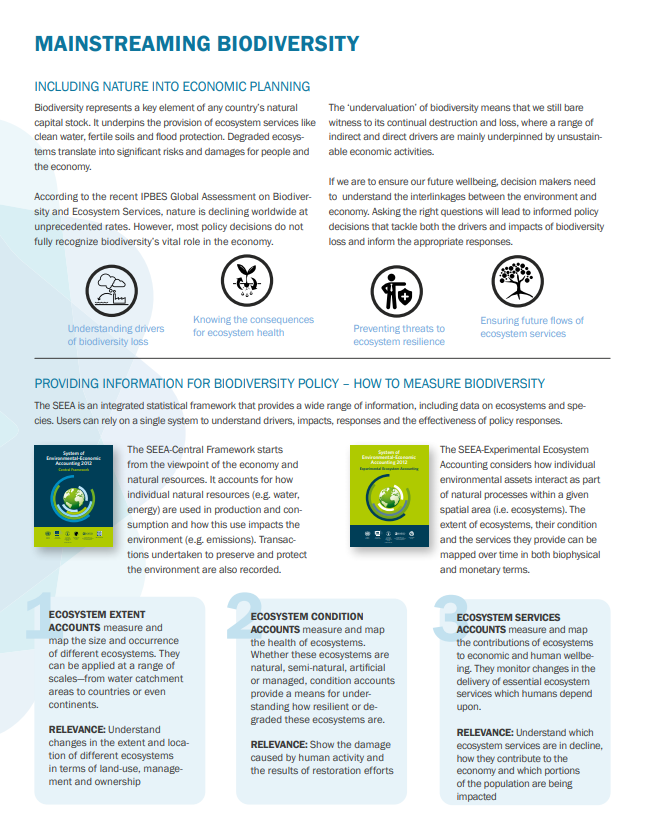Biodiversity

At its fifteenth meeting in 2022, the Conference of the Parties to the Convention on Biological Diversity (CBD) adopted the Kunming-Montreal Global Biodiversity Framework (GBF). The GBF is an ambitious framework which aims to halt and reverse biodiversity loss by 2030 and provides a pathway towards living in harmony with nature by 2050. An important advancement of the GBF compared to its predecessor, the Strategic Plan for Biodiversity 2011-2020, is the adoption of a monitoring framework for the GBF. The monitoring framework comprises a set of agreed indicators for tracking progress towards the the Framework's four goals for 2050 and 23 targets for 2030. The monitoring framework, adopted in decision 15/5, includes headline indicators which are recommended for national, regional and global monitoring, and more detailed component and complementary indicators. The monitoring framework will provide information on the world's progress towards the GBF's goals and targets.
Using the SEEA for GBF monitoring
In the decision adopting the monitoring framework, the Conference of Parties noted "the value of aligning national monitoring with the SEEA in order to mainstream biodiversity values in national statistical systems and to strengthen national monitoring systems and reporting..." (see para. 4). The SEEA can inform several headline indicators of the monitoring framework, including:
- A.2: Extent of natural ecosystems
- B.1: Services provided by ecosystems
- 9.1 Benefits from the sustainable use of wild species
- D.1 International public funding, including official development assistance for conservation and sustainable use of biodiversity and ecosystems
- D.3 Private funding (domestic and international) on conservation and sustainable use of biodiversity and ecosystems
The Conference of the Parties established the Ad Hoc Technical Expert Group (AHTEG) to provide guidance on the further development and operationalization of the monitoring framework, including the development of metadata for the indicators. These efforts include aligning the indicators with statistical frameworks, including the SEEA. The UN Statistics Division is a member of the AHTEG and liaises with the UN Committee of Experts on Environmental-Economic Accounting (UNCEEA) and AHTEG to promote the use of common standards related to data and methods. The metadata for the monitoring framework will be finalized at the sixteenth meeting of the Conference of the Parties to the CBD in late 2024, and national reporting will begin in 2026.
Connecting the SEEA to biodiversity policy
In general, the SEEA is well-positioned to inform policies on ecosystems and biodiversity, as the SEEA Ecosystem Accounting focuses on measuring ecosystem diversity, their extent, condition and services generated while also helps make the case for protecting and conserving biodiversity by providing a full picture of its connection to the economy. In particular, the information generated by the SEEA can be used to inform biodiversity policies in an integrated manner and develop indicators for monitoring progress towards targets. Moreover, the SEEA’s measurement on the role of biodiversity in supporting the economy helps make the economic case for conservation as it can present this information in both physical and monetary terms. Its integrated systems approach can clarify the major drivers of biodiversity loss and ecosystem changes, identify key trade-offs, and support the development of “win-win” conservation approaches. Ecosystem accounts used in combination with information on biodiversity protection expenditures can also provide decision-makers with a clear picture of the return-on-investment from biodiversity protection. The SEEA can also be used to measure level of effort through tracking expenditures on conservation efforts in both the public and private sectors. Being spatially explicit, it allows the identification of hot spots and provides insight for an efficient local response. More on how the SEEA can support effective biodiversity policy can be found in the publication, Natural Capital Accounting for Integrated Biodiversity Policies (2020).


